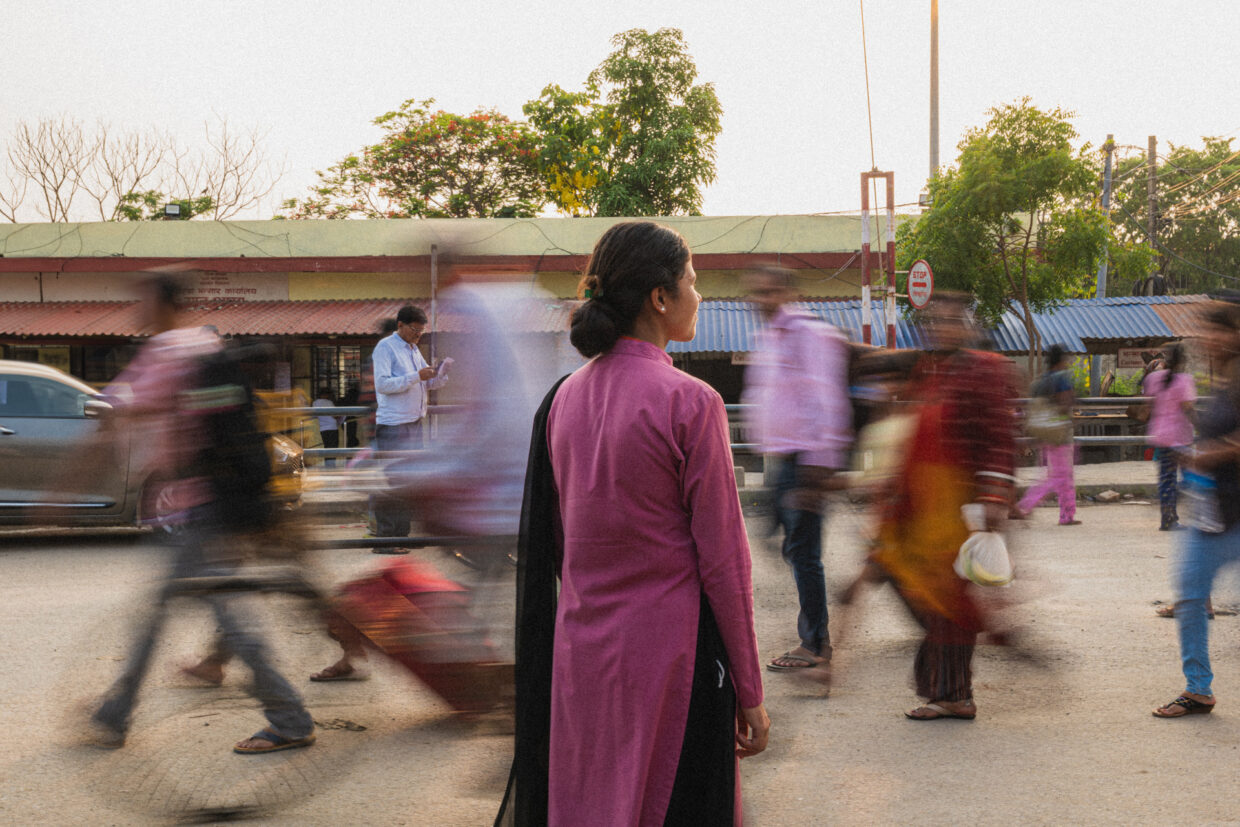Have you wondered how a border patrol station works? How does it help rescue individuals from human trafficking? What does “rescuing” even look like? Is it dangerous? In this article, we answer your pressing questions, giving you an inside look at the border patrol stations we partner with along the Nepal/India border.
How does a border patrol station prevent girls from being trafficked?
Surveillance booths are positioned near the border of Nepal and India where human trafficking rates are incredibly high. Here, brave women work together to identify and rescue possible victims of trafficking (typically young women and girls, some as young as 10 years old). They interact with people in the crowded, dusty streets, educating them about the dangers of trafficking and intervening when someone is suspected of being trafficked.
Who operates the border patrol stations?
Survivors of human trafficking typically lead and staff our partnering border patrol stations. This strategy is effective because each survivor knows from her own experience certain signs to look for. Survivors can empathize with potential victims: by sharing their own stories, they can quickly build trust and encourage others toward safety. Counselors are also trained in standard procedures and paid to do this life-transforming work at the border.
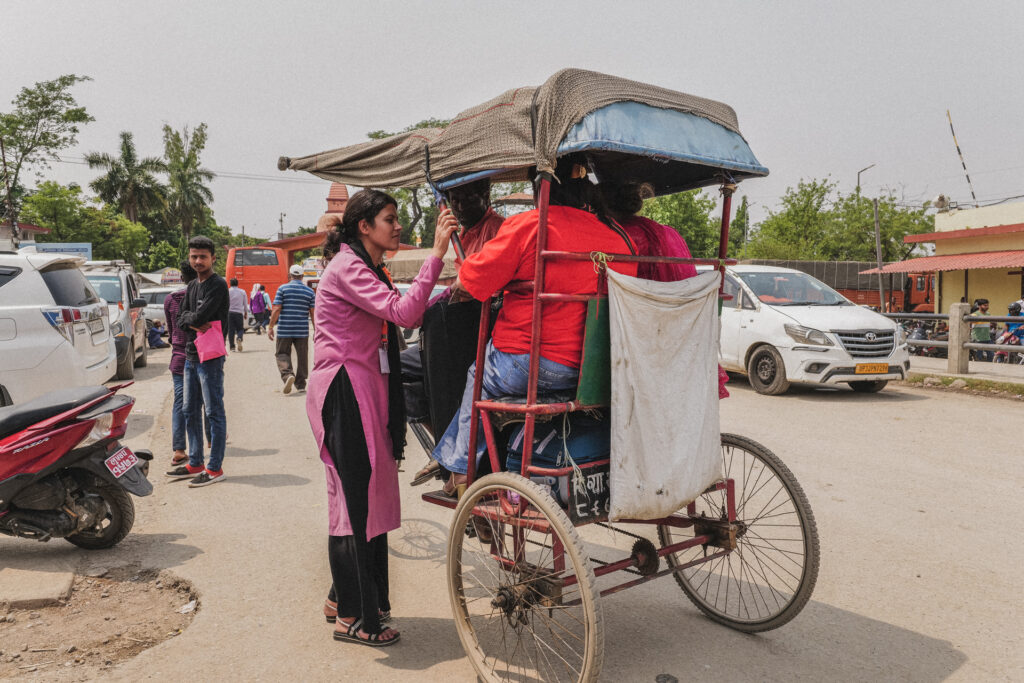
Why are border patrol stations necessary in Nepal?
Human trafficking is a significant problem in Nepal. Extreme poverty, discrimination and violence against women, and lack of employment opportunities are just some of the reasons that women and children are vulnerable to being trafficked.
Traffickers exploit the common desires of those facing systemic issues. Hearing false promises of a better life – high-paying jobs, education, arranged marriage – vulnerable people are lured to travel to India, believing they will be able to provide for themselves or their families. Sometimes, the victims are aware that they are entering into the “flesh trade,” but more often, they are unaware of the fate that awaits them once they cross the border.
Working at the border, counselors identify individuals at immediate risk of being trafficked and can offer a way out before they disappear into the “flesh trade,” becoming much harder to rescue. Traffickers will often confiscate travel documents and phones, effectively imprisoning victims once they cross the border.
In many ways, each border patrol station acts as the last line of defense in the effort to rescue girls before they become lost in the world of trafficking.
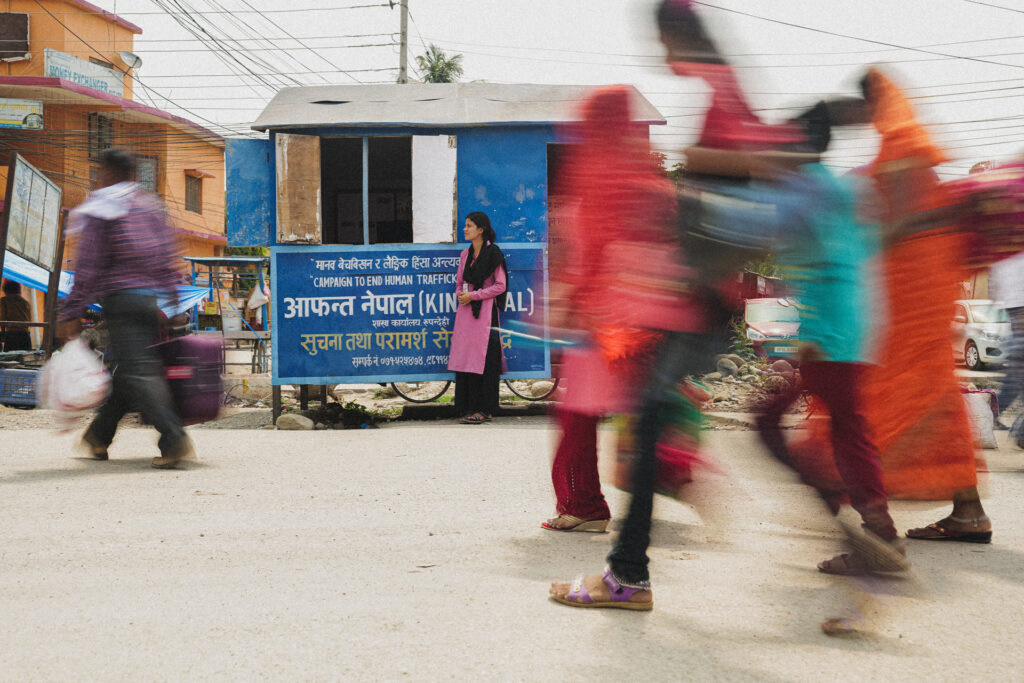
What does intervention & rescue look like?
Teams at the border patrol station are trained to follow a protocol that identifies, intervenes, counsels, reports, and rescues potential victims of human trafficking. Sometimes, this process is quick; sometimes, it takes an hour. Traffickers might stay nearby during this process, vouching for their cover story, hoping their victim doesn’t catch on. Other times, the traffickers abandon the girl and escape.
Step 1: Identification
The border patrol counselors scan the crowds, looking for people or groups that show signs of trafficking: too-new clothing, odd couplings, etc.
Step 2: Intervention
After identifying an individual, a border patrol counselor approaches to ask questions and share information about how they could be in danger. Often, this potential victim has no idea they are about to be (or have already been) trafficked.
Step 3: Counseling
This step is critical in determining the next action to ensure her safety.
At this stage, the individual is separated from her potential traffickers (who may be posing as a relative or a boyfriend). If the identified individual agrees, the counselor takes her into the surveillance booth to establish safety and privacy, starting by sharing her own story of trafficking and survival.
Then, the counselor asks follow-up questions that can help the individual come to terms with the reality of the situation. Sometimes, phone calls are made to assess the situation at home and the intended destination.
Step 4: Reporting
When an individual is deemed “high risk” for being trafficked, the counselor reports the situation to the local authorities, who are often close at hand. The local police take testimony and file reports, which are submitted for further investigation.
Step 5: Rescue
If the individual agrees, she is invited to a Transit Center to receive temporary safe housing. This arrangement is in place until she can safely reunite with her family. However, if the family was involved in selling the individual, she would be invited to a Safe Home for her protection.
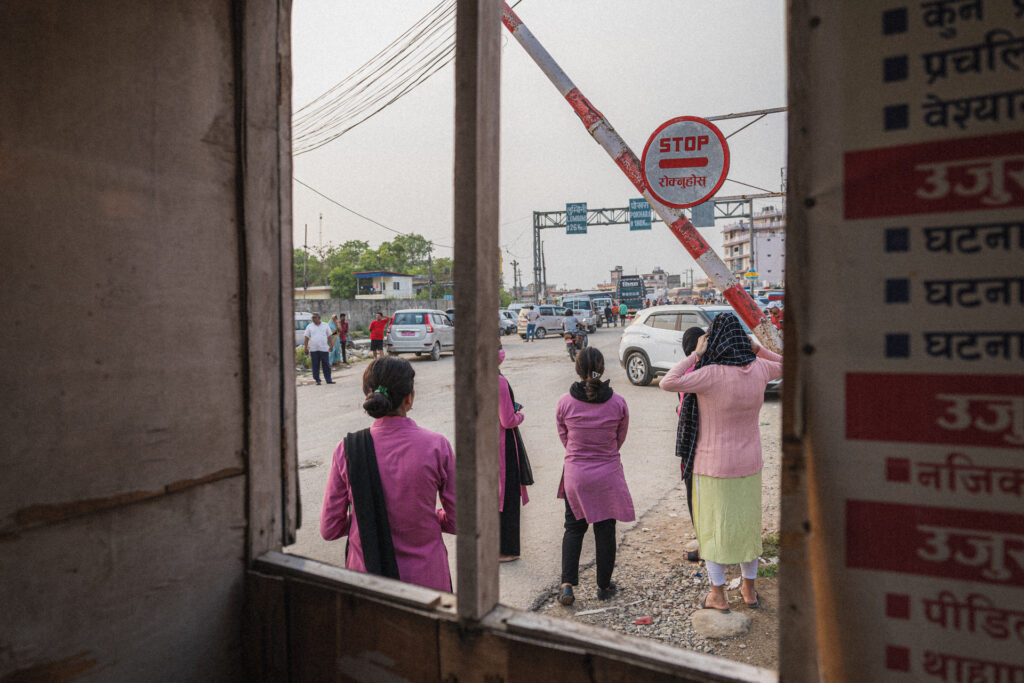
Is work at the border patrol station dangerous?
It can be. Thankfully, the police station is often close to the border patrol station, and the counselors have a good relationship with them. They will often quickly get the police involved if it’s an obvious trafficking case.
Often, the real threat of danger doesn’t come until later. There’s a perpetual risk that rescued individuals and counselors will be followed by traffickers and targeted later. That’s why the counselors work in teams, and the transit home locations are kept quiet.
What happens after someone gets rescued?
Once rescued, counselors lead survivors to begin their recovery process by receiving health assessments, contacting their families to determine if reunification is possible, and establishing an action plan for aftercare services and transportation to their homes.
The goal is to see rescued girls return home to reunite with their families. However, sometimes trauma or unsafe situations do not allow the girls to go home; instead, they are welcomed into a Safe Home.
While in the Safe Home, the girls receive trauma counseling, health assessments, and care as needed from an experienced and loving team.
How many border patrol stations does Venture sponsor?
Currently, Venture supports three border patrol stations along the Nepal/India border.
In 2023 alone, the counselors we support rescued 516 individuals from human trafficking. Additionally, 6,458 individuals received counseling and education at the border.
By giving $100, you can fund one day of border patrol station operations, which rescues one girl every three days (on average) and counsels many.
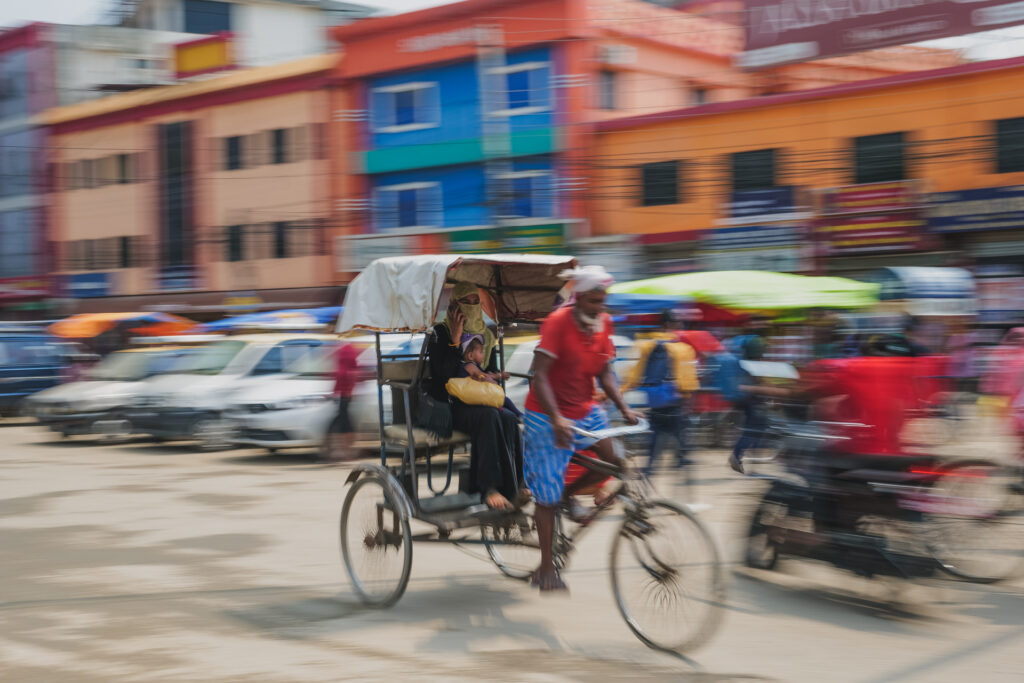
How can I help support a border patrol station?
1. Share Educational Content
Your voice matters, and awareness is the first step toward prevention. You can follow us on Instagram and share posts about the courageous work of our partners to start conversations and help dispel myths surrounding human trafficking.
2. Join A Movement
30 For Freedom is a miles-based movement with a vision to end sex trafficking in our lifetime. You can join one of the chapter events in Minnesota or Wisconsin, committing to raise awareness, fundraise, and participate in a distance challenge from a 5k to a full marathon. If a chapter location is too far, you can join a virtual run–or consider starting a 30FF chapter near you!
3. Send Rescue & Support
You can give directly to anti-trafficking efforts at venture.org/donate. As always, our 100% promise means that every dollar you give goes directly to the causes you care about.
